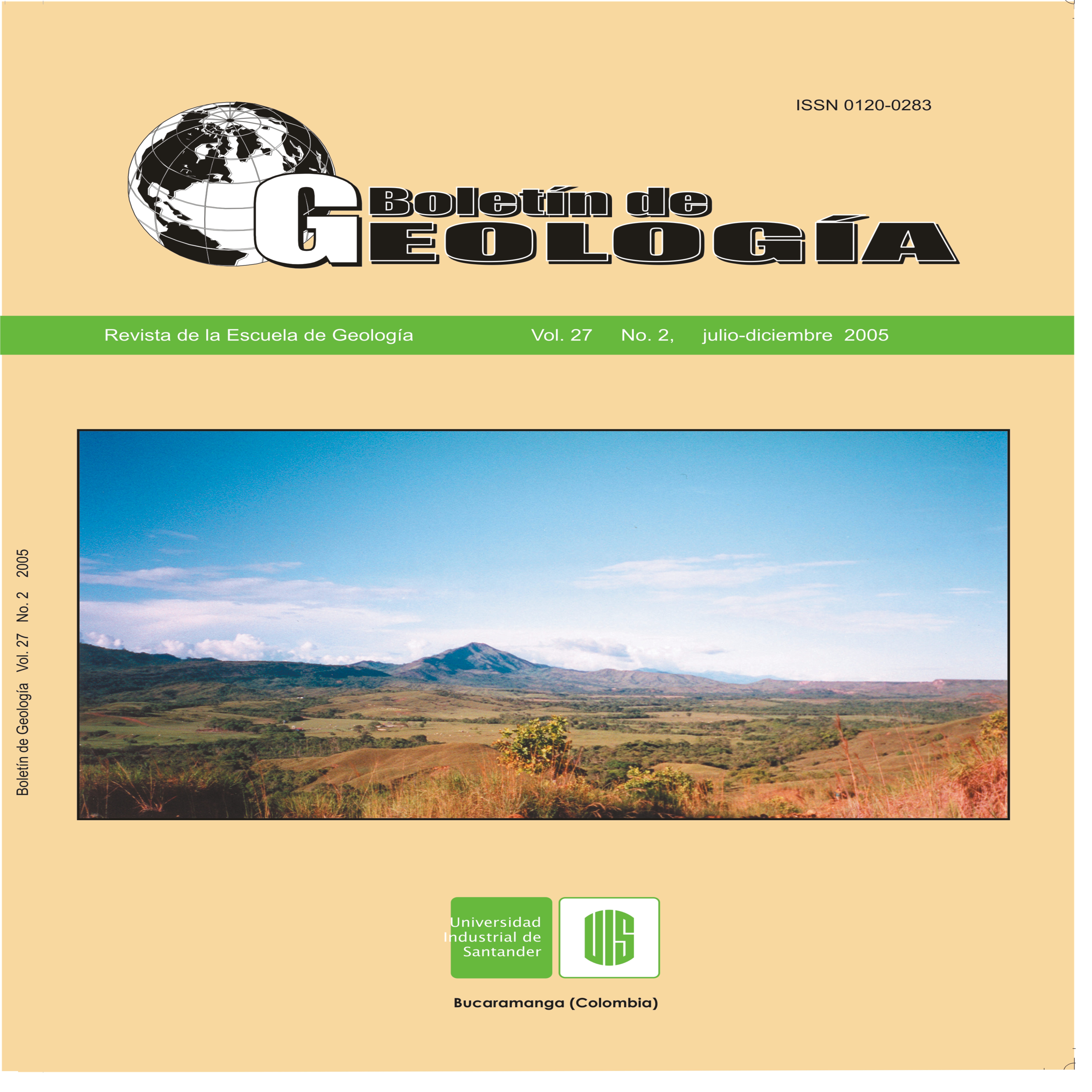A PALEOMAGNETIC AND ROCK MAGNETIC STUDY IN THE SALDAÑA FORMATION AND OVERLYING CRETACEOUS UNITS IN THE NORTHERN UPPER MAGDALENA VALLEY, COLOMBIA
How to Cite
Abstract
Lavas, mudstones and volcaniclastics rocks from the Saldaña (Upper Triassic - Lower Jurassic), Yaví and Alpujarra (Aptian) formations in the northern Upper Magdalena Valley were demagnetized using thermal and alternating field methods in order to isolate magnetic components and to establish a relative age of magnetization using several field tests. Magnetic mineralogy analyses permit the identification of the minerals that record uncovered magnetic components. Isolated components represent different events of magnetization. Directions parallel to the present Earth magnetic field were isolated in all the studied units. Characteristic components isolated from the Yaví Formation in Alpujarra area and from the Saldaña Formation in Olaya Herrera area, may correspond to primary or near-to-deposition events of magnetization. In Olaya Herrera, the characteristic component of the Saldaña Formation (D=179.9 I=7.1 N=8 k=17.19 α95=13.7) is carried by magnetite. Characteristic components uncovered in two different structural domains document 43±29ºcounterclockwise rotations previous to deposition of the Aptian Yaví Formation. Characteristic directions of the Yaví Formation are carried by hematite and magnetite, and the mean-site direction (D=5.2 I=6.2 N=7 k=40.15 α95=9.6) suggests a pre-folding event of magnetization.
Keywords: Paleomagnetism, Saldaña Formation, Yaví Formation, Triassic-Jurassic, Upper Magdalena Valley
Downloads
References
Barber, R., Chavez, F. (1991). Regulations of primaryproduction rate in the equatorial Pacific. LimnologyOceanography, Vol. 36, pp. 1803-1815
Broecker, W.S., Peng, T-H. (1982). Tracers in the Sea.Eldigio press, Lamont-Doherty Geological Observatory,New York, 690 p.
Capone, D., Zehr, J., Paerl, H., Bergman, B., Carpenter,J. (1997). Trichodesmium, a globally significantmarinecyanobacterium. Science, Vol. 276, pp.1221-1229
Carlson, C., Bates, N., Hansell, D., Steinberg, D. (2001).Carbon Cycle En: Encyclopedia of Ocean Sciences.Elsevier Science Publishers B.V, New York, pp. 390-400
Centro Control Contaminacion del Pacifico (CCCP) 2002.Compilación Oceanográfica de la Cuenca PacificaColombiana. 109 p
Chávez, F., Barber, R. (1987). An estimate of newproduction in the equatorial Pacific. Deep-Sea Research,Vol.34, Nº 7, pp. 1229-1243
Chávez, F., Strutton, P., Friederich, G., Feely, R., Feldman,G., Foley, D., McPhaden, M. (1999). Biological andchemical response of the equatorial Pacific Ocean to the1997-98 El Niño. Science, Vol. 286, pp. 2126-2131
Chester, R. (1999). Marine Geochemistry. 2ª Edición.Blackwell Publishing. 506 p
Corredor, J., Morell, J. (2001). Seasonal variation ofphysical and biogeochemical features in eastern Caribbeansurface water. Journal of Geophysical Research, Vol. 106(C3), pp. 4517-4525
Da Cunha, L., Le Querre, C., Buitenhuis, E., Giraud, X.,Ludwig, W. (2004). Potential role of rivers and coastalareas on global ocean biogeochemistry. GlobalBiogeochemical Cycles (en preparación).
Dugdale, R., Wilkerson, F. (1998). Silicate regulation ofnew production in the equatorial Pacific upwelling. Nature,Vol. 391, pp. 270- 273.Dugdale, R., Wilkerson, F. (2001). Sources and fates ofsilicon in the ocean: the role of diatoms in climate andglacial cycles. Scientia Marina, Vol. 65, Nº 2, pp. 141-152.
Farrell, J., Prell, W. (1989). Climatic change and CaCO3preservation: an 800000 year bathymetric reconstructionfrom the central equatorial Pacific Ocean.Paleoceanography, Vol. 4, pp. 447-466
Feely, R., Sabine, C., Takahashi, T., Wanninkhof, R.(2001). Uptake and storage of carbon dioxide in theocean: the global CO2 survey. Oceanography, Vol. 14,Nº 4, pp. 18 -32
